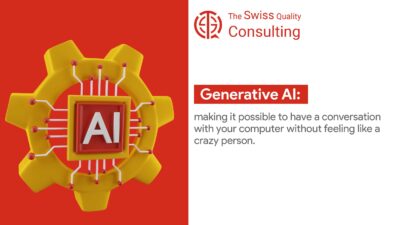Revolutionizing User Experience with HCI
Understanding Human-Computer Interaction (HCI)
Human-Computer Interaction (HCI) is an interdisciplinary field that focuses on the design and usability of computer technology. HCI aims to make the interaction between users and computers seamless and intuitive, ultimately enhancing the user experience (UX). This field combines elements of computer science, psychology, design, and other relevant disciplines to create systems that are easy to use, efficient, and enjoyable.
The Growing Significance of HCI in the Middle East
The Middle East, particularly countries like Saudi Arabia and the UAE, are witnessing a significant surge in technology adoption across various sectors. As businesses and governments invest heavily in digital transformation, the demand for skilled HCI professionals is also on the rise.
In Riyadh and Dubai, major tech hubs in the region, HCI is playing a pivotal role in shaping the development of user-friendly interfaces for applications ranging from e-commerce platforms to government services.
The Impact of HCI on Business and Society
The impact of HCI extends beyond enhancing the user experience. Effective HCI design can boost productivity, reduce errors, and improve customer satisfaction. In the business world, this translates to increased efficiency, reduced costs, and a competitive edge in the market.
Furthermore, HCI is instrumental in making technology accessible to a broader audience, including those with disabilities. By designing inclusive interfaces, HCI helps create a more equitable digital landscape.
HCI Applications and Innovations in the Middle East
HCI in Government Services
Governments in the Middle East are leveraging HCI to streamline their services and improve citizen engagement. User-friendly online portals and mobile applications are being developed to facilitate tasks like visa applications, tax payments, and business registrations. These initiatives aim to reduce bureaucratic hurdles and enhance the overall experience for citizens.
HCI in the Financial Sector
The financial sector is another area where HCI is making a significant impact. Banks and financial institutions are developing intuitive mobile banking apps and online platforms to cater to the growing demand for digital financial services. These user-friendly interfaces empower customers to manage their finances conveniently and securely.
HCI in Healthcare
HCI is transforming the healthcare industry in the Middle East. From electronic health records (EHRs) to telemedicine platforms, HCI is helping to improve patient care, streamline administrative processes, and enhance the overall healthcare experience. For instance, user-friendly telemedicine apps are making healthcare more accessible to patients in remote areas.
The Future of HCI in the Middle East
The future of HCI in the Middle East is bright. As the region continues to embrace technological advancements, the demand for skilled HCI professionals will continue to grow. Businesses and governments will increasingly rely on HCI to create user-centric solutions that enhance productivity, improve service delivery, and drive innovation. The Middle East is poised to become a hub for HCI research and development, with significant contributions to the global HCI community.
Challenges and Opportunities in HCI Implementation
While the potential of HCI in the Middle East is vast, there are also challenges to consider. These include the need for cultural sensitivity in interface design, ensuring data privacy and security, and addressing the digital divide in some parts of the region. However, these challenges also present opportunities for innovation and growth in the HCI field. By addressing these issues, HCI professionals can contribute to a more inclusive and equitable digital landscape in the Middle East.
Education and Training in HCI
To meet the growing demand for HCI expertise, educational institutions in the Middle East are expanding their offerings in this field. Universities are introducing HCI programs at both undergraduate and graduate levels, providing students with the knowledge and skills needed to design user-centric technological solutions. These programs often include coursework in user research, interaction design, usability testing, and prototyping.
Collaboration and Knowledge Sharing
Collaboration between academia, industry, and government is crucial for the continued growth of HCI in the Middle East. By working together, stakeholders can share knowledge, resources, and best practices, ultimately driving innovation and accelerating the adoption of HCI in various sectors. Conferences, workshops, and online forums provide platforms for HCI professionals to connect, collaborate, and exchange ideas.
#HumanComputerInteraction #HCI #UserExperience #UXDesign #MiddleEast #SaudiArabia #UAE #Riyadh #Dubai #Technology #Innovation























